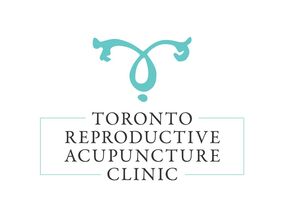|
You know the drill when it comes to hormonal blood work; it’s a lot of poking and prodding on multiple days of your menstrual cycle. In my experience, my patients have had all the right testing done (mostly), but no one has taken the time to sit down with them and explain what the results truly mean. The biggest pitfall of serum (blood) hormone testing is that the reference ranges are MASSIVE. Which means it is highly unlikely that your results will be deemed “abnormal” even though you know something is wrong. So that’s what this blog is for; I’m going to break it all down for you and discuss what the results mean and the REAL range you’re looking for. Note: the following reference ranges are for women and are Canadian units. 1) Estradiol What it is: Estradiol, along with LH and FSH, stimulate follicle (egg) maturation. It’s also responsible for female sex characteristics, thickening of the endometrial lining, and bone protection. Estrogen can also be converted from fat, in both males and females, by an enzyme called aromatase. What it means: Low estradiol is present in peri-menopause and menopause. Elevated estrogen is present in early premature ovarian insufficiency (followed by low levels), and in estrogen dominant conditions like: PMS, endometriosis, PCOS, and obesity. Reference Range: Follicular 77-921 pmol/L Luteal 77-1145 pmol/L The “real” range: The width of the above ranges is ridiculous! Estradiol should be tested on day 3 and should be lower than 200 pmol/L and higher than 80 pmol/L. A level higher than this is a sign that the body is trying too hard to stimulate egg development, and the ovaries are not responding. In this case, you will likely see elevated FSH too. 2) FSH (follicle-stimulating hormone) What it is: The name says it all. FSH is in charge of the development and maturation of follicles. What it means: High levels are diagnostic of menopause, ranging from 27-133 IU/L. When your body is pumping out more FSH than normal, it’s a sign that the ovaries are not responding (just like estrogen). Low levels of FSH are typically present in PCOS. Reference Range: Follicular 3-8 IU/L Mid-cycle 3-22 IU/L Luteal 1.5-5.5 IU/L The “real” range: Higher than 8 IU/L on day 3 (that’s the 3rd day of your period) is too high and the value is only going up from there. 6 IU/L is as good as it gets on day three. 3) LH (Luteinizing hormone) What it is: Ah, the hormone everyone knows and loves! The LH surge triggers ovulation and is measured by urine strips. LH also contributes to the maturation of eggs. You may not know that estrogen surges right before LH, which can also be used to detect ovulation. What it means: On day 3, an LH to FSH ratio greater than 2:1 is indicative of PCOS. LH is elevated in PCOS for so many reasons I’ll need to dedicate another blog to it. Elevated LH also stimulates elevated testosterone production, and in turn estrogen production. Contrary to what you may think, high LH actually inhibits ovulation instead of stimulating it. Reference Range: Follicular 2-12 IU/L Mid-cycle 8-90 IU/L Luteal 1-14 IU/L The “real” range: LH should be almost equivalent to FSH on day 3. 6-8 IU/L is ideal. 4) Progesterone What it is: Most of the body’s progesterone is produced by the outer coating of the egg, called the corpus luteum. After you ovulate, progesterone levels increase to maintain the endometrial lining and prepare for embryo implantation. Progesterone also stimulates the production of a thick mucous that covers the cervix so no sperm can enter the uterus (FYI this is the basis of hormonal birth control). What it means: A low level of mid-luteal progesterone indicates anovulation and luteal phase defect (short luteal phase) and predicts implantation failure/ early miscarriage. Reference Range: Luteal 4-50 nmol/L The “real” range: On day 21 the minimum value is 10 nmol/L to have ovulated and 20 nmol/L to carry a pregnancy. Day 21 is arbitrary if you don’t ovulate on day 14. Progesterone is best-tested 7 days after you ovulate. 5) Prolactin What it is: The main function of prolactin is to stimulate breast milk production. However, elevation can also occur due to the following: benign pituitary tumor, periods of high stress, hypothyroidism, PCOS, and certain medications. What it means: Elevated prolactin inhibits the release of GnRH, which then inhibits the release of LH and FSH. Without LH and FSH, follicles will not develop. Reference Range: 5-30 ug/L The “real” range: Prolactin levels as high as 50 ug/L can inhibit ovulation, but small increases by a few points are relatively harmless. One-time elevation should be followed by repeat testing. As mentioned, stress is a major influence on this hormone. 6) DHEA What it is: A precursor hormone to both estrogen and testosterone. What it means: DHEA is often evaluated in PCOS, as elevations in this hormone increase androgen levels. It may be prescribed to improve ovarian reserve (but not without fun side-effects). Reference Range: <9.8 umol/L 7) Androstenodione What it is: Produced from DHEA, this hormone is the precursor to testosterone. What it means: Elevated androstenedione is found in PCOS and adrenal hyperplasia. Both conditions inhibit ovulation. It may be elevated in isolation, or with testosterone. Reference Range: Follicular 1.2-8.7 nmol/L Luteal 1.1-8.2 nmol/L 8) Testosterone What it is: You know this hormone for its role as the primary male sex hormone, but it’s important for women too! In the ovaries, testosterone is produced by the stromal cells and converted to estrogen. It participates in follicle growth and development, not to mention male and female libido. What it means: Too much is present in PCOS which is far from ideal, but too little can inhibit ovulation and egg development. Reference Range: Total testosterone 0.3- 1.8 nmol/L (some labs up to 4 nmol/L) The “real” range: Testosterone is extremely tricky to test accurately. Free testosterone is a better measurement than total and the reference ranges (depending on the lab) have huge variability. In order to test free testosterone you need to test total testosterone and sex hormone binding globulin. 9) AMH (Anti-Mullerian Hormone) What it is: It’s a hormone that can depict the female egg reserve because it is secreted by the eggs in the ovaries. The more eggs you have, the higher the value will be. Not surprisingly, AMH decreases with age. This is the only hormone test we have for predicting ovarian reserve. What it means: A lower value for your age means you have a lower number of eggs than the average female. A much higher value for your age is indicative of PCOS, as the cystic ovaries in PCOS secrete excess AMH. Reference Range: The numbers are averages based on age: < 33 = 2.1 ng/mL 33-37 = 1.7 ng/mL 38-40 = 1.1 ng/mL > 41 = 0.5 ng/mL The “real” range: At any age, a value > 3.15 - 4.45 ng/mL warrants further testing for PCOS. A value of 6.8-10 ng/mL is diagnostic. 10) TSH (thyroid stimulating hormone) & Antibodies (anti-TPO, anti-TG, anti-TSH) What it is: TSH is released by the anterior pituitary, which then stimulates the release of thyroid hormones (T3, T4) from the thyroid gland. TSH above the reference range with symptoms present is diagnostic of hypothyroidism, and below is hyperthyroidism. TPO and TG antibodies cause the thyroid condition known as Hashimoto’s, anti-TSH is more commonly present in Graves’. What it means: Deficient thyroid function affects egg quality, embryo quality, and implantation rates. Combine that with thyroid antibodies, and there’s an increased risk of miscarriage. Reference Range: TSH 0.32-4.0 mIU/L Antibodies should all be negative The “real” range: TSH should be < 2.5 to prevent miscarriage. A full thyroid lab panel (with individual thyroid hormones) is certainly necessary in cases of recurrent miscarriage. Have more questions? Meet with me! Wondering about your own lab results? Need a little help wading through the information and finding the useful parts? I offer a free 30 min consultation to all new patients. Click below to book yours today. I look forward to seeing you soon! Written by Dr Caleigh Sumner ND References
Zadehmodarres S, Heidar Z, Razzaghi Z, Ebrahimi L, Soltanzadeh K, Abed F. Anti-mullerian hormon level and polycystic ovarian syndrome diagnosis. Iranian Journal of Reproductive Medicine. 2015;13(4):227-230. Wiweko B, Maidarti M, Priangga MD, et al. Anti-mullerian hormone as a diagnostic and prognostic tool for PCOS patients. Journal of Assisted Reproduction and Genetics. 2014;31(10):1311-1316. doi:10.1007/s10815-014-0300-6. http://tests.lifelabs.com/Laboratory_Test_Information/Search.aspx Huhtinen K, Desai R, Ståhle M, et al. Endometrial and Endometriotic Concentrations of Estrone and Estradiol Are Determined by Local Metabolism Rather than Circulating Levels. The Journal of Clinical Endocrinology and Metabolism. 2012;97(11):4228-4235. doi:10.1210/jc.2012-1154. Kumar P, Sait SF. Luteinizing hormone and its dilemma in ovulation induction. Journal of Human Reproductive Sciences. 2011;4(1):2-7. doi:10.4103/0974-1208.82351.
2 Comments
If you’re an adult female, you’ve probably been getting a regular screening PAP test completed every three years since your early 20’s. You book that often-dreaded appointment with your gynecologist or family doctor, and bring yourself in for a quick sample of cervical cells to be collected and sent off to the lab. Most of the time, this is the last you hear about your cervical health, until you’re reminded three years later to do it all again. For women who have abnormal cervical cells, however, this process tends to look a lot different. You are usually contacted by your gynecologists’ office, and informed that you will need to have a repeat PAP test much sooner than expected, usually in 3-6 months time. Depending on the extent of cellular abnormalities, you may also be referred for a colposcopy and biopsy of your cervix (fancy words for fancy imaging procedures). But how does all of this impact your fertility and future conception? Does the health of your cervix play a role in subfertility and pregnancy outcomes? With rates of HPV and cervical dysplasia on the rise, it’s important to be informed and empowered about how your cervical health can impact your fertility, even if conception is not your immediate goal. Today I break it all down, and chat about one of my favourite women’s health topics; cervical dysplasia! What does my abnormal PAP mean? Let’s start with the basics! My patient’s come in all the time, knowing nothing more than their PAP test result was “abnormal” – while this knowledge is important, it doesn’t tell us enough about how severe the cellular changes are, or how concerned we need to be about progression to cervical cancer. The presence of an abnormal PAP test generally indicates that you are experiencing some degree of cervical dysplasia – this means that under certain conditions and stressors, the previously normal cells of your cervix have mutated and become abnormal in size, shape, and/or function. The most common cause of these abnormal cellular changes is the Human Papilloma Virus (HPV), which has been estimated to be present in 80-90% of the North American Population at current. However, the interesting fact is that not all individuals who have been exposed to HPV will have abnormal PAP test results in their lifetime. A variety of factors seem to play a role in progression of HPV to cervical dysplasia, such as which specific HPV strain you have contracted (low or high risk), immune system function, sexual practices and HPV status of your sexual partners, as well as factors such as diet, smoking status, and long term oral contraceptive pill use. When your PAP test results return as “abnormal” they generally have one of the following basic terms to indicate the severity or “grade” of the cervical lesions present:
Huh? What is cervical dysplasia? Cervical dysplasia is a term used to describe the abnormal cellular changes that occur to the cells of the cervix. It indicates the presence of pre-malignant or pre-cancerous changes to the cervix, and if left untreated it may progress to cervical cancer over time. High stage lesions are more likely to progress to cervical cancer, while low stage lesions are less likely. The main causative factor is currently chronic HPV infection. What is HPV? HPV or the Human Papillomavirus is an infectious agent that is generally transmitted between sexual partners via direct sexual contact of the skin and/or mucous membranes. It is considered the main causative factor of cervical cancer worldwide. There are over 100 different strains of HPV, some of which can cause genital and non-genital warts, while others can cause cervical dysplasia and progress to cervical cancer. Low-risk strains of HPV (like 6 and 11) are more likely to cause external genital warts, while high-risk strains (like 16 and 18) are more often associated with cervical changes and progression to cancer. After your abnormal Pap test results, your gynecologist may assess for HPV strain using an HPV DNA test. How does this impact my fertility? Now for the fertility talk! Presence of cervical dysplasia on it’s own has not yet been linked to any changes to fertility status, but the use of recommended conventional treatment options is a different story. The most common conventional treatment of cervical dysplasia is a surgical procedure called LEEP, where the abnormal tissue is removed from the cervix using an electro-cautery tool. Research indicates that those who undergo surgical treatment of cervical intraepithelial neoplasia are at in increased risk of subfertility, with prolonged time to pregnancy. Time to conception was prolonged in 16.4% of women treated via surgical removal of the cervical tissue, versus 8.4% in untreated women, and 8.6% of women who underwent colposcopy alone. The LEEP procedure may also impact the production of cervical mucous, which is an extremely important aspect of how the sperm is able to travel unimpeded to meet and fertilise the egg during your fertile window. The procedure has also been linked to stenosis (or narrowing) of the opening to the cervix, which may impact fertility and pregnancy outcomes – most common of which include increased risk of premature rupture of membranes, low birth weight, and pre-term delivery. Incompetence of the cervix, which can be caused by surgical trauma to the area, may also increase the risk for miscarriage. The good news, is that LEEP is not your only option when it comes to treatment of cervical dysplasia. Luckily, the clearance rate of HPV and cervical dysplasia is naturally quite high – about 60% of individuals with low grade cervical dysplasia will regress to normal within two years, with 33% of those with high grade changes following suit. The main issue that arises is HPV persistence – conventional treatment options only focus on removing the abnormal cells from the cervix, and do not focus on clearing the virus itself. As a result, the return of cervical dysplasia post LEEP procedure can be as high as 30%. Naturopathic treatment options that improve clearance of HPV as well as promote regression of dysplasia fill in the gaps of conventional care, while also being mindful of impacts to future fertility and pregnancy outcomes. Top 5 Naturopathic Management Options for Cervical Dysplasia and HPV So, what can you do to help prevent persistence of HPV and improve clearance of dysplasia without impacting fertility? Ongoing PAP tests in accordance with screening guidelines are particularly important – whether you decide to move forward with conventional and/or naturopathic treatment, continued cervical screening is crucial in monitoring potential progression to cancer. Repeat PAP testing may also be linked to increased rate of regression of cervical dysplasia, so keep up to date on those PAP tests, especially if they’ve been abnormal!
We offer a free 30 minute consultation to all new patients. Come in and meet with one of our Naturopathic Doctors to discuss your options for promoting cervical health, while also preserving your fertility. Click the button below to book with us today! About the Author Dr Jennah Miller is a Naturopathic Doctor at the Toronto Reproductive Acupuncture Clinic. Read her full bio. References
De Vet, H. C. W., & Sturmans, F. (1994). Risk factors for cervical dysplasia: Implications for prevention.Public Health,108(4), 241-249. Tomita, L. Y., Roteli-Martins, C. M., Villa, L. L., Franco, E. L., & Cardoso, M. A. (2011). Associations of dietary dark-green and deep-yellow vegetables and fruits with cervical intraepithelial neoplasia: modification by smoking.British journal of nutrition,105(6), 928-937. González, C. A., Travier, N., Luján‐Barroso, L., Castellsagué, X., Bosch, F. X., Roura, E., ... & Sacerdote, C. (2011). Dietary factors and in situ and invasive cervical cancer risk in the European prospective investigation into cancer and nutrition study.International journal of cancer,129(2), 449-459. Kyrgiou, M., Athanasiou, A., Paraskevaidi, M., Mitra, A., Kalliala, I., Martin-Hirsch, P., ... & Paraskevaidis, E. (2016). Adverse obstetric outcomes after local treatment for cervical preinvasive and early invasive disease according to cone depth: systematic review and meta-analysis. Bmj, 354, i3633. Ciavattini, A., Clemente, N., Carpini, G. D., Gentili, C., Di Giuseppe, J., Barbadoro, P., ... & Liverani, C. A. (2015). Loop electrosurgical excision procedure and risk of miscarriage. Fertility and sterility, 103(4), 1043-1048. Acharya, G., Kjeldberg, I., Hansen, S. M., Sørheim, N., Jacobsen, B. K., & Maltau, J. M. (2005). Pregnancy outcome after loop electrosurgical excision procedure for the management of cervical intraepithelial neoplasia. Archives of gynecology and obstetrics, 272(2), 109-112. Bogdanova, J. (2008) Coriolus versicolor–innovation in prevention of oncogynecological diseases, especially HPV. Akush Ginekol (Sofiia). 2008;47 Suppl 3:51-3. Ali, N., Roshdy, E., Sabry, M., & Al-Hendy, A. (2013). Green tea: varieties, production and health benefits. Food and beverage consumption and health (Eds. Wu, W.), Nova Biochemical, USA, 33-74. Hudson, T., & Northrup, C. (2008). Women's Encyclopedia of Natural Medicine: Alternative Therapies and Integrative Medicine for Total Health and Wellness. McGraw-Hill. https://www.cancer.gov/about-cancer/causes-prevention/risk/infectious-agents/hpv-fact-sheet#q2 There is so much that we don’t know about what it takes to carry a baby to term. If you’re working with a fertility clinic you’ll notice there’s a lot of observation during the first two weeks of your cycle, and once you’ve ovulated (or post embryo transfer) there’s not much monitoring after that! Rest assured, this article isn’t about what we don’t know but rather what we do! Fifty percent of miscarriages may not have an identifiable cause, but that means 50% of them do. Let’s go over the stats here for a moment. Recurrent miscarriage is considered two or more consecutive miscarriages, however diagnosis and treatment is often not suggested until three consecutive miscarriages have occurred. Not because you should have to suffer, or because your doctor doesn’t care, but because there’s a 15-25% chance of any pregnancy ending in miscarriage. The most common cause of miscarriage is fetal chromosome abnormality, which is about 60% of the time. While we’re going over the terminology, a “chemical pregnancy” is considered a miscarriage before 5 weeks, however I still consider it a miscarriage. Factors to consider in miscarriage:
Factors NOT to consider in miscarriage:
In my practice I don’t wait the “3-loss” rule to begin treatment and diagnosis, if you’ve experienced a loss and you want support, you deserve that support right away. Top 10 Most Common Causes of Miscarriage The majority of the list can be diagnosed with blood work or imaging. The entirety of the list can be treated!
Honorable mentions:
Have more questions? Meet with us! For any of the information we have provided, there are ways of diagnosing and treating these issues. You have options! We offer a free 30 minute consultation to all new patients Book yours today and lets get started! Written by Dr Caleigh Sumner ND References
Iqbal, S., Ghani, F., & Qureshi, R. (2016). Frequency of Thyroid Peroxidase Antibody and its Association with Miscarriages Among Pregnant Women. Journal of the College of Physicians and Surgeons Pakistan, 26(10), 831-834. Sundermann, A. C., Edwards, D. R. V., Bray, M. J., Jones, S. H., Latham, S. M., & Hartmann, K. E. (2017). Leiomyomas in pregnancy and spontaneous abortion: A systematic review and meta-analysis. Obstetrics & Gynecology, 130(5), 1065-1072. Bärebring, L., Bullarbo, M., Glantz, A., Hulthén, L., Ellis, J., Jagner, Å., ... & Augustin, H. (2018). Trajectory of vitamin D status during pregnancy in relation to neonatal birth size and fetal survival: a prospective cohort study. BMC pregnancy and childbirth, 18(1), 51. Loss, E. P. PRACTICE BULLETIN. EVALUATE, W. (2012). Evaluation and treatment of recurrent pregnancy loss: a committee opinion. Fertility and Sterility, 98(5). El Hachem, H., Crepaux, V., May-Panloup, P., Descamps, P., Legendre, G., & Bouet, P.-E. (2017). Recurrent pregnancy loss: current perspectives. International Journal of Women’s Health, 9, 331–345. http://doi.org/10.2147/IJWH.S100817 No, G. T. G. (2011). The investigation and treatment of couples with recurrent first-trimester and second-trimester miscarriage. April 2011. Haas, D. M., & Ramsey, P. S. (2008). Progestogen for preventing miscarriage. Cochrane Database Syst Rev, 2. |
Copyright © Toronto Reproductive Acupuncture Clinic. All Rights Reserved | Privacy Policy







 RSS Feed
RSS Feed